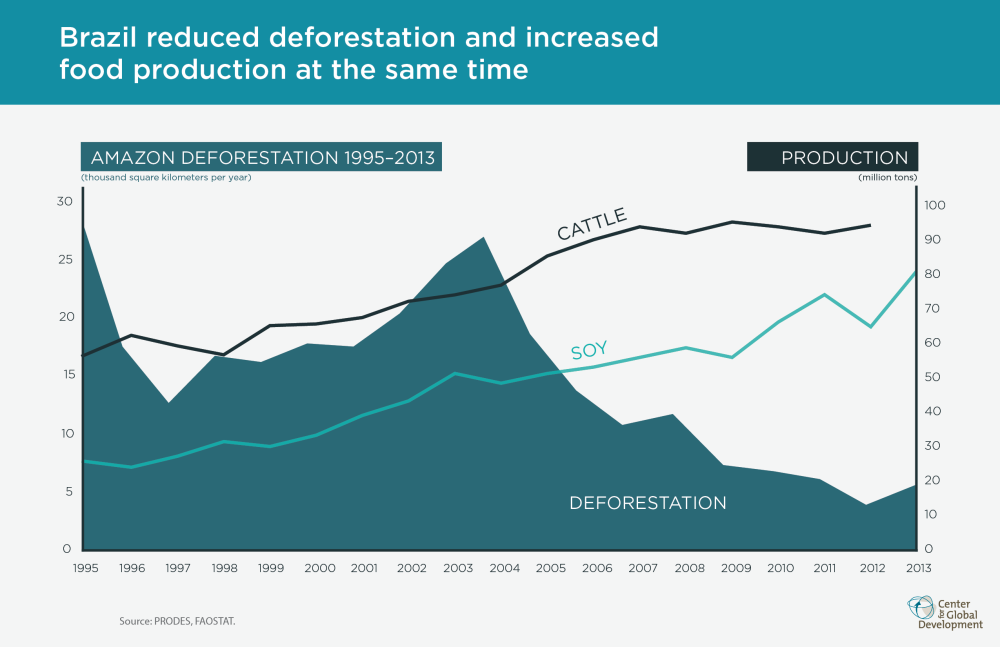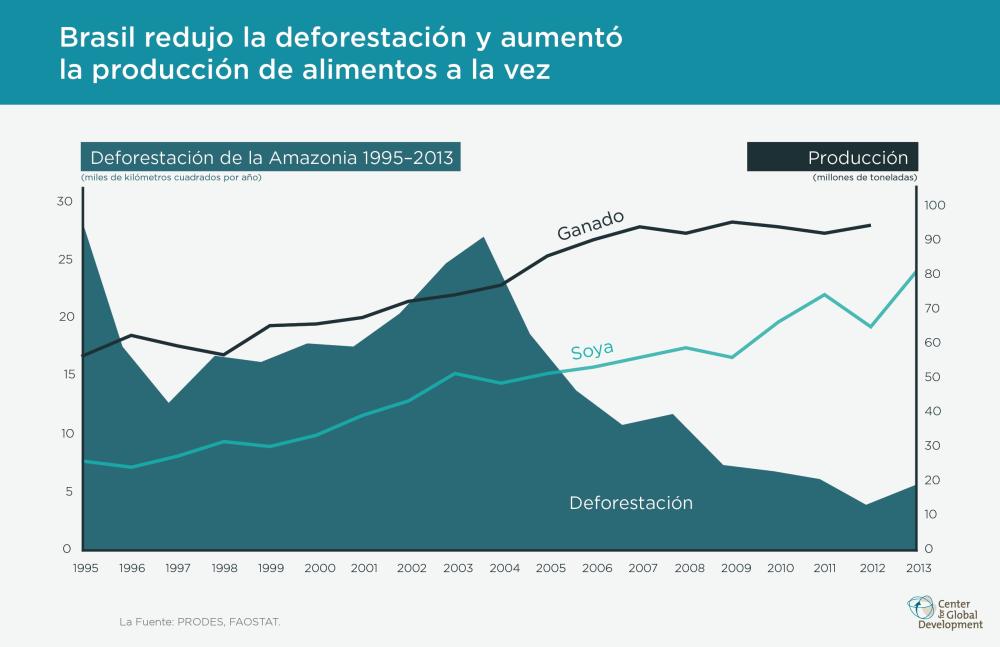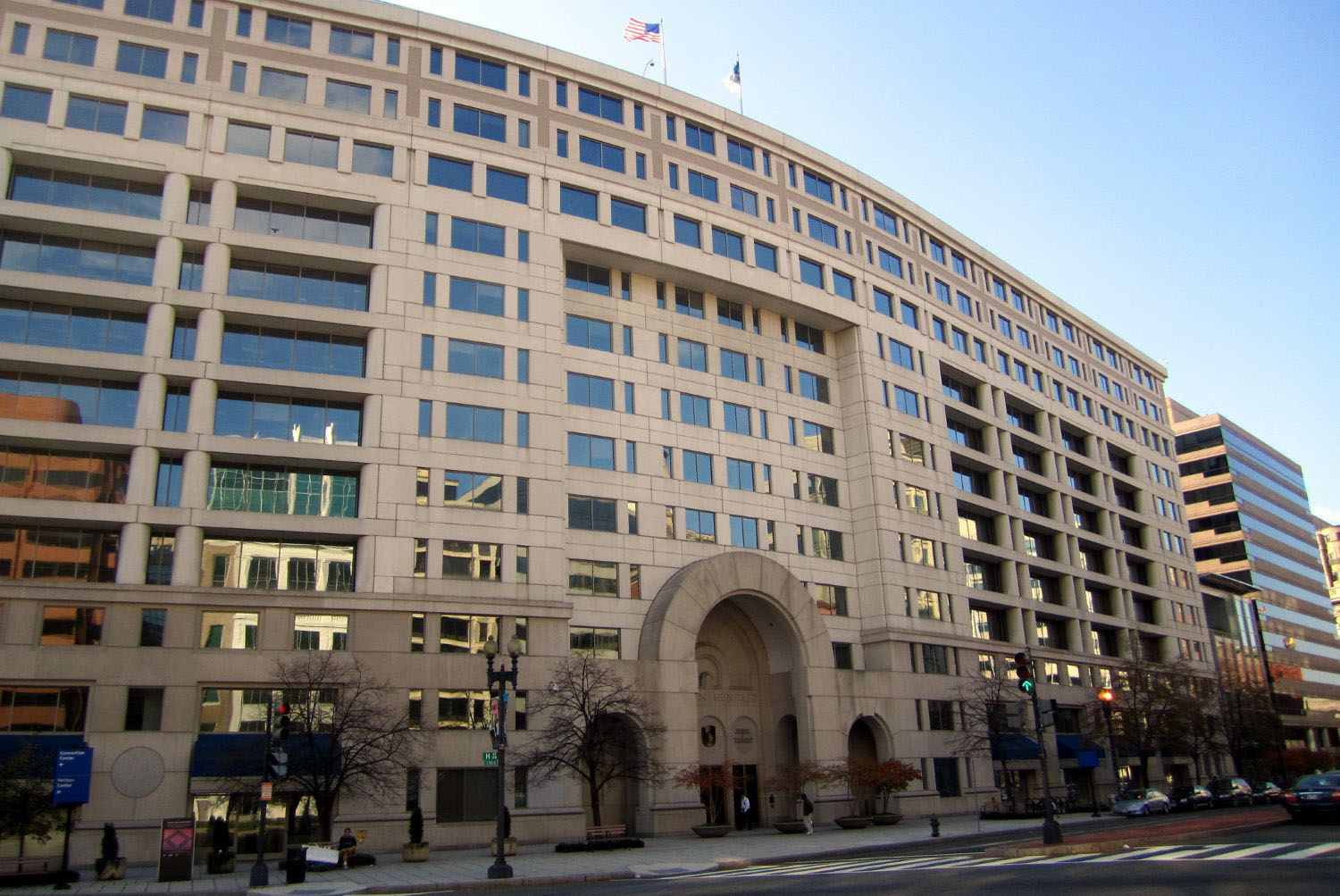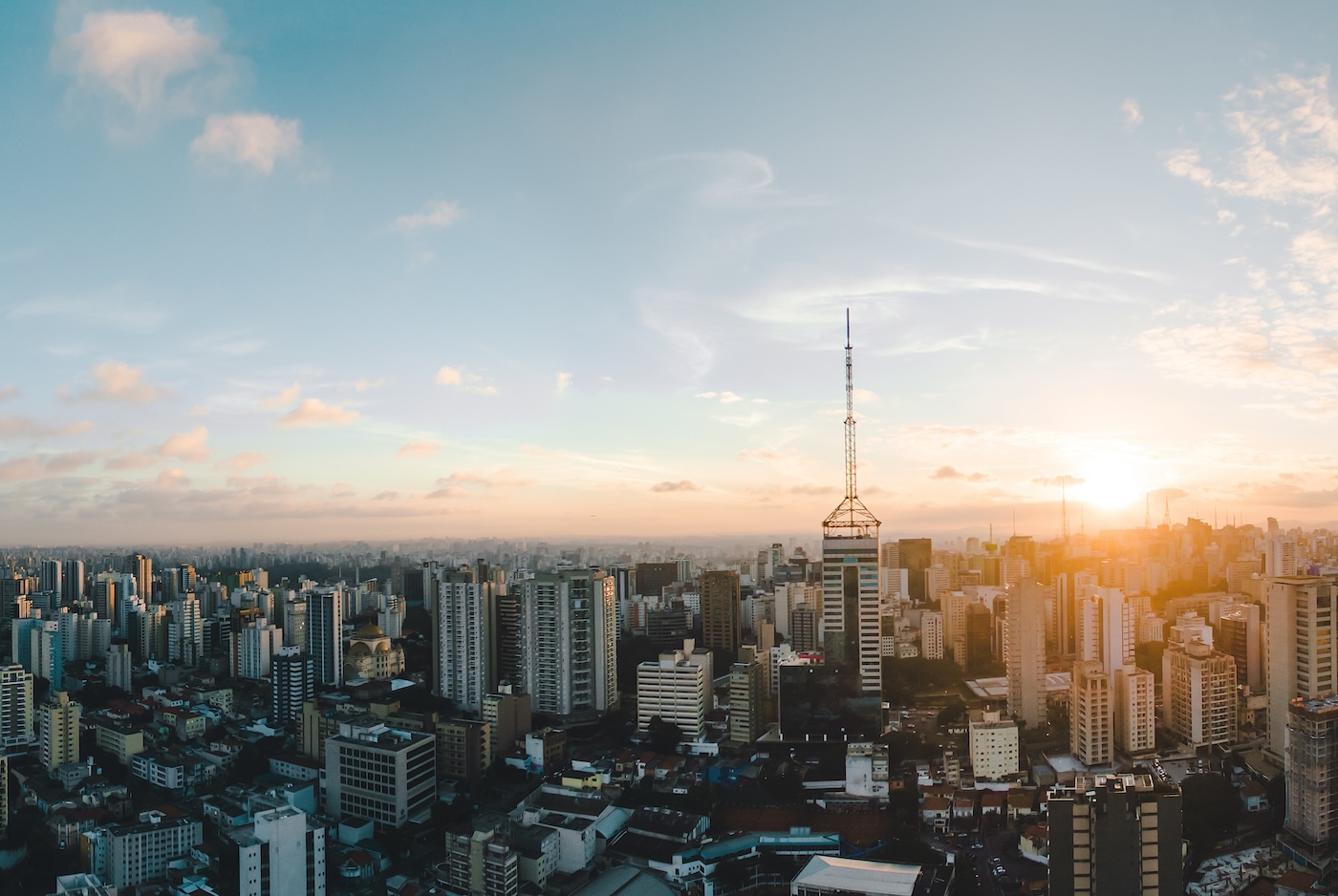The results of Sunday’s runoff election in Brazil open a new chapter in the country’s fight against deforestation. Dilma Rousseff will have to overcome skepticism that she’s the right woman for the job, in light of perceptions that she privileged development at the expense of conservation during her first term as president.
Previously, in the span of one short decade that began early in the first administration of President Lula, Brazil cut what was then the world’s highest rate of deforestation by some 80 percent. And in so doing Brazil became the world’s leader in reducing greenhouse gas emissions. In a parallel diplomatic reversal, Brazil repositioned itself from opposing the inclusion of forests in the international climate regime to supporting REDD+.
A new background paper commissioned by CGD illuminates how both of these turnarounds came about. In “The Political Economy of Deforestation in Brazil and Payment-for-Performance Finance,” Brazilian journalist Sérgio Abranches provides insight into how Brazilian policy entrepreneurs leveraged progress on addressing deforestation back and forth across domestic and international policy arenas. An important part of the story is the establishment of The Amazon Fund, with which Brazil demonstrated how international results-based finance can supplement domestic efforts to fight deforestation.
How they did it – not just the policies, but the politics
Many studies—most recently summarized in a CGD brief —have analyzed the specific policy measures that Brazil employed to bring down deforestation. These policies included increased law enforcement efforts, establishment of protected areas, and the withholding of credit from high-deforestation municipalities. Remarkably, the reduction in deforestation was accompanied by increases in production of soy and cattle—the two main drivers of forest loss—as illustrated in the figure below:

Fewer studies have dug into the story of how the political will to enact such policies was mustered in the first place. This is the key challenge facing leaders in other countries aspiring to follow Brazil’s example—not least, Indonesia.
A key protagonist in the story told by Abranches is Marina Silva, the candidate knocked out of the recent presidential contest in the first round of voting. As President Lula’s first Minister of Environment, Silva initiated the sequence of policy actions that led to the dramatic decline in deforestation. As detailed by Abranches, Silva skillfully parlayed her relationships with President Lula and others to draw whole-of-government attention to the imperative of addressing deforestation and to prevail in prompting decisions that were politically tough.
Particularly compelling is Abranches’ account of how Silva resigned her position in 2008 in such a way as to empower her successor, Carlos Minc, and to ensure follow-through on the forest protection agenda after her departure from government. In this instance and in others, international attention helped to tip the political scales in favor of the forces for conservation. This recurring theme is somewhat surprising in light of Brazil’s notorious sensitivity regarding national sovereignty when it comes to how the country manages its forests.
The question now is how Dilma Rousseff’s close victory in Sunday’s runoff election will affect Marina Silva’s legacy going forward and the degree to which international attention can still help.
Looking ahead
As reported in a CGD Brief following our trip to Brazil in May, Nancy Birdsall, Bill Savedoff, and I heard concerns from many people with whom we spoke that maintaining progress on reducing deforestation will become more difficult over time. Indeed, last year, Brazil’s deforestation rate ticked up a bit and might do so again this year. Some observers were concerned that under President Rousseff, use of the previously successful command-and-control policy tools had slacked off and needed to be reinvigorated.
Others that we interviewed stressed that new tools were needed to address growing drivers of deforestation, such as infrastructure development and smallholder agriculture. Most had a favorable view of the role of The Amazon Fund in providing some “carrots” to complement “sticks,” but many were worried that its portfolio of projects was too small or insufficiently strategic to address looming challenges.
Whatever the policies, approaches, and finance required to address current threats to Brazil’s forests, a new political coalition to support them will have to be assembled if the Brazilian miracle is to be sustained. Fissures widened during the acrimonious election campaign—which included Marina Silva’s endorsement of Rousseff’s opponent—will need to be bridged, and the president will have to win the confidence of stakeholders both at home and abroad.
Now would be a good time for other countries to recognize and express support—especially at the G-20 Summit in Brisbane next month and the climate talks in Lima in December—for Brazil’s leadership on the climate and forest agenda and their hopes that that leadership will continue.
Los resultados de la reciente segunda vuelta de las elecciones en Brasil, abren un nuevo capítulo en la lucha del país contra la deforestación. Dilma Rousseff tendrá que superar el escepticismo sobre si es ella la mujer adecuada para el trabajo, dada la percepción de que dio prioridad al desarrollo a expensas de la conservación del medio ambiente durante su primer mandato como presidente.
Anteriormente, en el corto período de una década que comenzó a principios de la primera administración del presidente Lula, Brasil recortó en aproximadamente 80 por ciento lo que era entonces la tasa de deforestación más alta del mundo. Y, al hacerlo, Brasil se convirtió en el líder mundial en la reducción de las emisiones de gases de efecto invernadero. Dando un giro diplomático radical, Brasil pasó de oponerse a la inclusión de los bosques en el régimen climático internacional a apoyar lREDD+ (Programa de Reducción de Emisiones de Carbono causadas por la Deforestación y la Degradación de los Bosques)
Una nueva publicación encargada por CGD ilustra cómo se produjeron ambos vuelcos. En “The Political Economy of Deforestation in Brazil and Payment-for-Performance Finance” ("La economía política de la deforestación en Brasil y las finanzas del pago por desempeño"), el periodista brasileño Sérgio Abranches da una idea de cómo los creadores de políticas brasileños progresaron en materia de deforestación a través de su participación en la arena política nacional e internacional. Una parte importante de la historia es el establecimiento del Fondo Amazonía, con el que Brasil demostró cómo las finanzas internacionales basadas en resultados pueden complementar los esfuerzos nacionales para luchar contra la deforestación.¿Cómo lo hicieron? No se trata sólo de las políticas públicas, sino también de la política.
Muchos estudios (recientemente resumidos en un Informe CGD) han analizado las políticas específicas que Brasil empleó para reducir la deforestación. Estas incluían mayores esfuerzos para hacer cumplir la ley, establecimiento de áreas protegidas, y menores transferencias a los municipios con altos niveles de deforestación. Cabe destacar que la reducción de la deforestación fue acompañada por aumentos en la producción de soya y ganado (los dos causantes principales de destrucción de bosques) como se ilustra en la figura siguiente:

Un menor número de estudios ha hurgado en la historia de cómo se forjó inicialmente la voluntad política para promulgar tales políticas. Este es el reto clave para los líderes en otros países que aspiran a seguir el ejemplo de Brasil y, no menos importante, el de Indonesia.
Un protagonista clave en la historia contada por Abranches es Marina Silva, candidata eliminada en la primera ronda de votación de la reciente contienda presidencial. Como la primera Ministra de Medio Ambiente del Presidente Lula, Silva inició la secuencia de acciones de política que llevaron a la dramática disminución de la deforestación. Como detalla Abranches, Silva hábilmente se valió de sus relaciones con el presidente Lula y otros actores para llamar la atención de todo el gobierno hacia la necesidad imperativa de abordar el problema de la deforestación y en incitar a la toma de decisiones políticamente difíciles.
Particularmente fascinante es el recuento de Abranches sobre cómo Silva renunció a su cargo en 2008 a fin de conferir poder a su sucesor, Carlos Minc, y así asegurar la continuidad de la agenda de protección de los bosques después de su salida del gobierno. En este caso y en otros, la atención internacional ayudó a inclinar la balanza política a favor de las fuerzas por la conservación. Este tema recurrente es un tanto sorprendente, en vista de que Brasil es notoriamente sensible respecto a su soberanía nacional, cuando del manejo de sus bosques se trata.
La pregunta ahora es, cómo la cerrada victoria de Dilma Rousseff en la segunda vuelta electoral afectará el legado de Marina Silva en el futuro, y en qué grado la atención internacional todavía puede ayudar.
De cara al futuro
Como se muestra en un Informe CGD luego de nuestro viaje a Brasil en mayo, Nancy Birdsall, Bill Savedoff y yo hablamos con muchas personas que expresaron su preocupación de que mantener los avances en la reducción de la deforestación será más difícil con el tiempo. De hecho, el año pasado, la tasa de deforestación de Brasil subió un poco y podría hacerlo de nuevo este año. Algunos observadores estaban preocupados de que durante el gobierno de Rousseff, el uso de herramientas de políticas de mando y control, previamente exitosas, había decaído y necesitaba ser revitalizado. Otros entrevistados subrayaron que se necesitan nuevas herramientas para abordar las crecientes causas de la deforestación, tales como el desarrollo de infraestructura y la agricultura a pequeña escala. La mayoría de ellos tenía una opinión favorable de la función del Fondo Amazonía como proveedor de regulaciones e incentivos, pero muchos estaban preocupados porque la cartera de proyectos era muy pequeña o con deficiente gestión estratégica para hacer frente a desafíos inminentes.
Independientemente de las políticas, enfoques y financiamiento necesarios para hacer frente a las actuales amenazas a los bosques de Brasil, una nueva coalición política tendrá que surgir para apoyarlos, si el milagro brasileño se quiere mantener. Las fisuras ensanchadas durante la mordaz campaña electoral (que incluyó el respaldo de Marina Silva al oponente de Rousseff) tendrán que ser reparadas, y la presidenta tendrá que ganarse la confianza de las partes interesadas, tanto en casa como en el extranjero.
Disclaimer
CGD blog posts reflect the views of the authors, drawing on prior research and experience in their areas of expertise. CGD is a nonpartisan, independent organization and does not take institutional positions.





